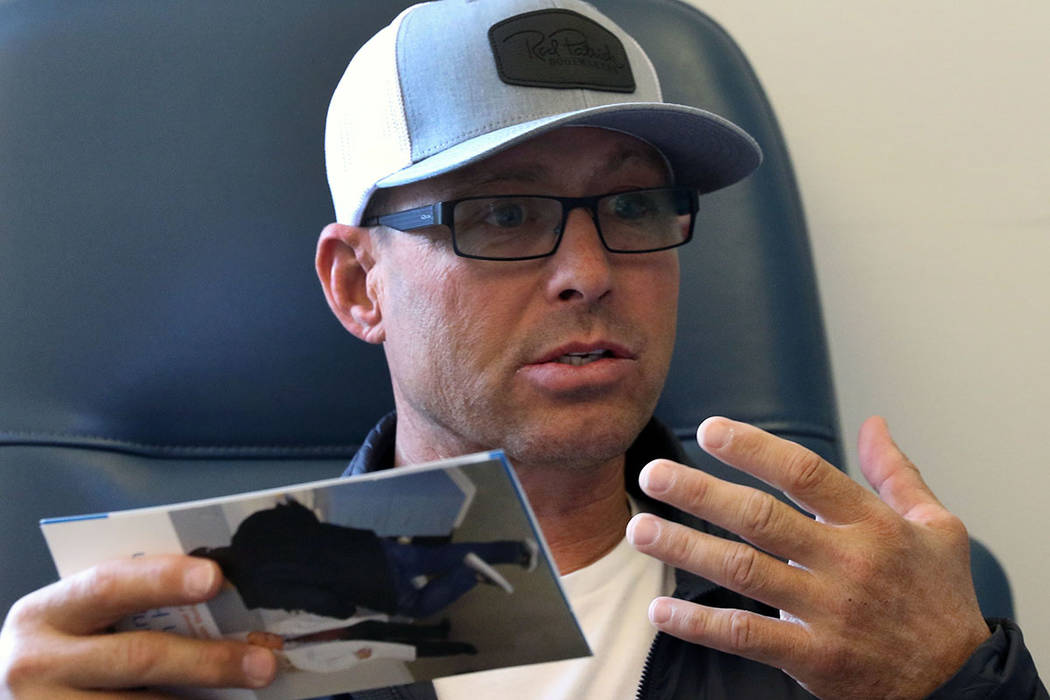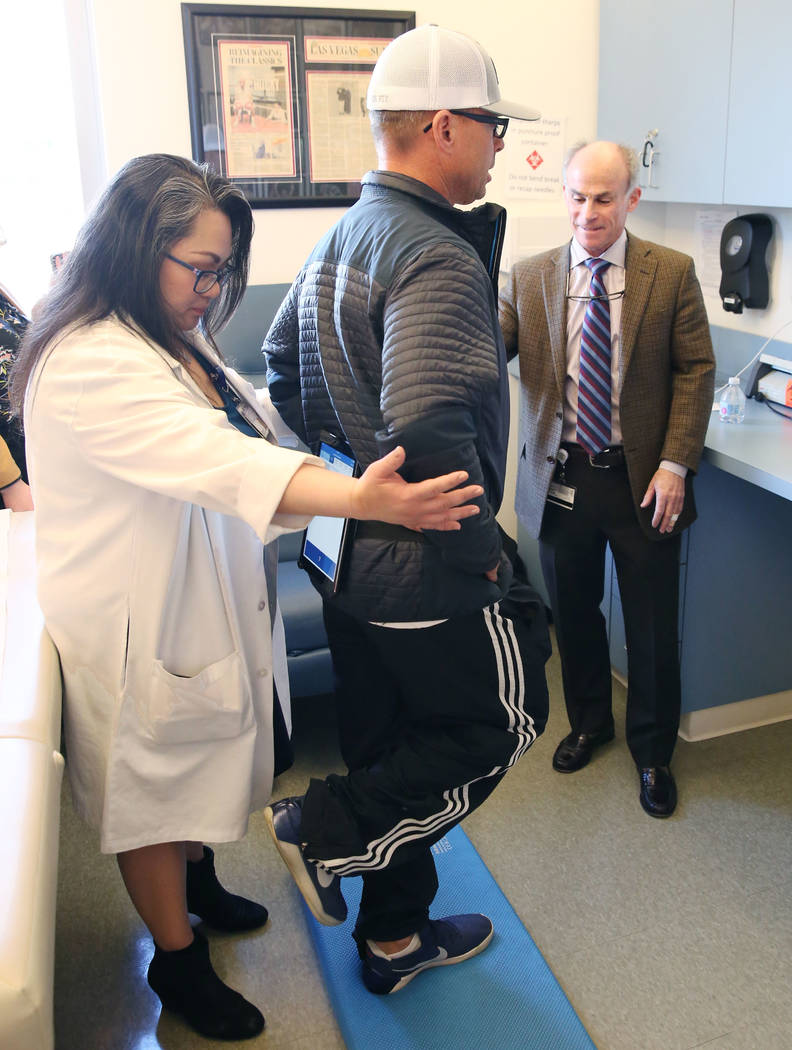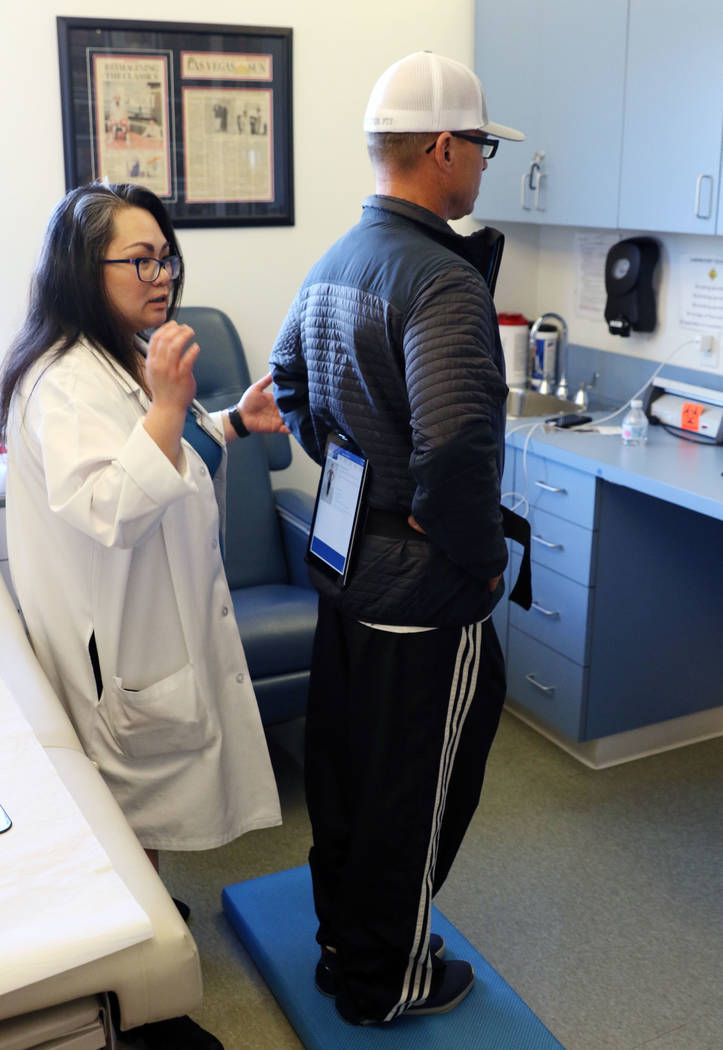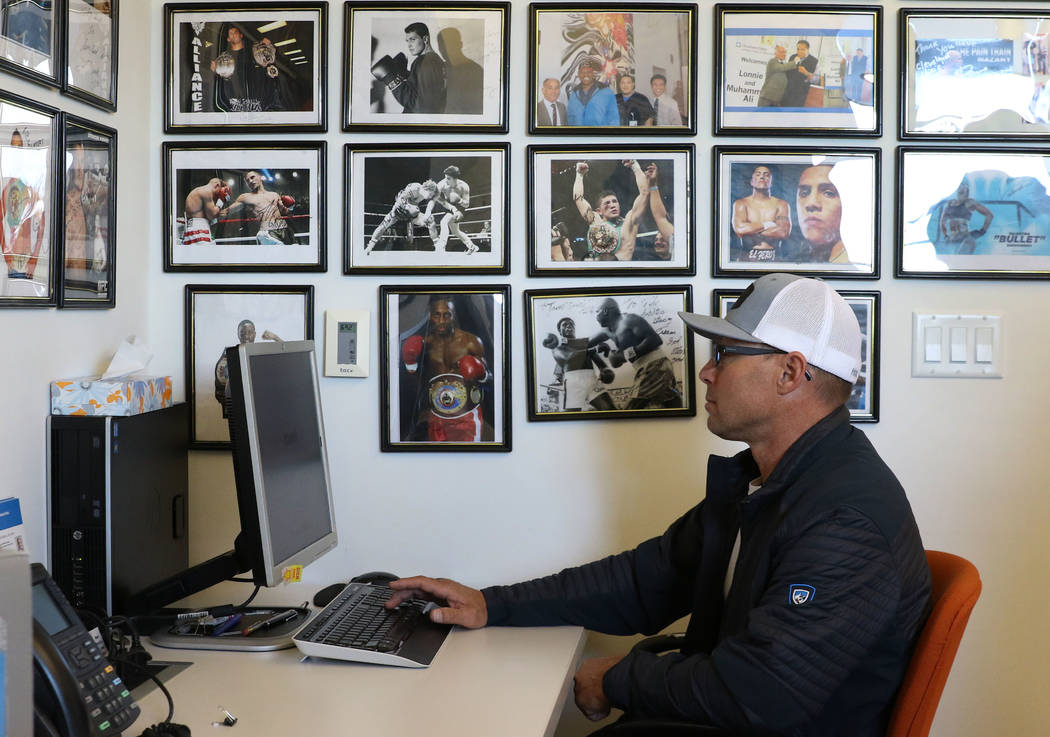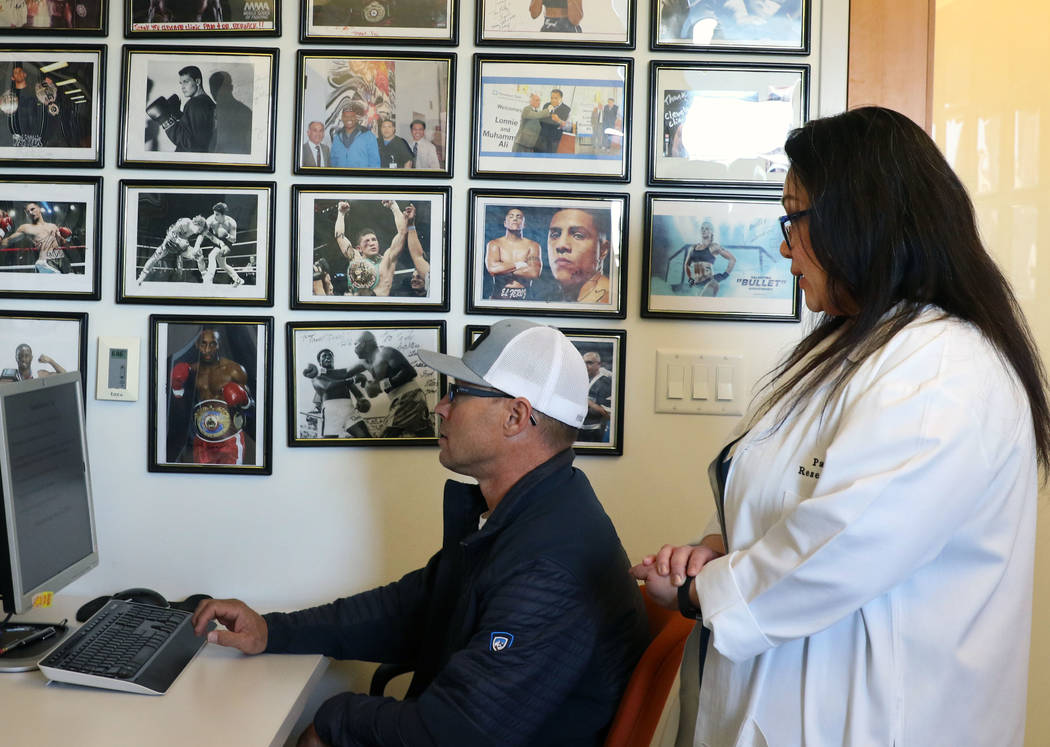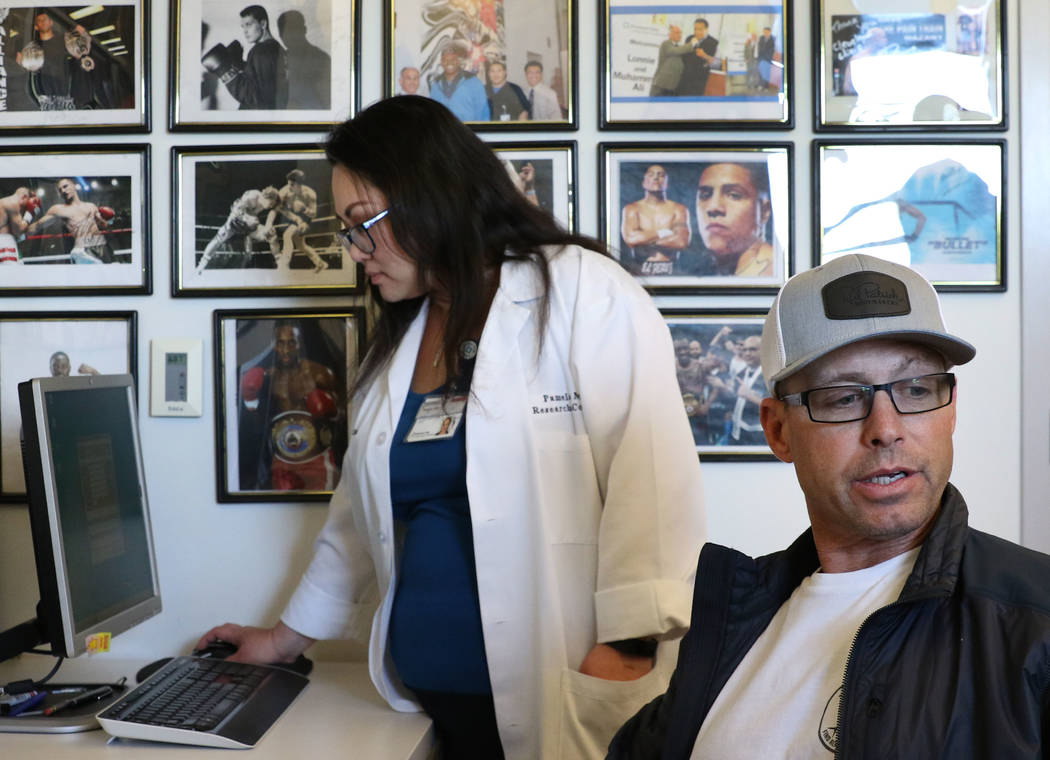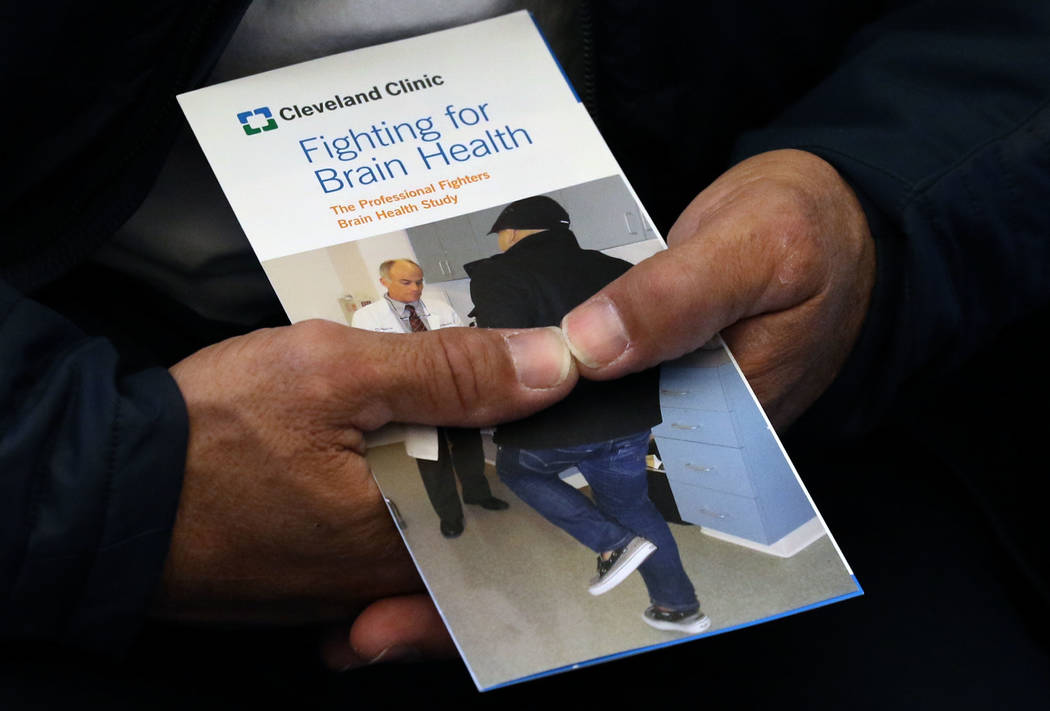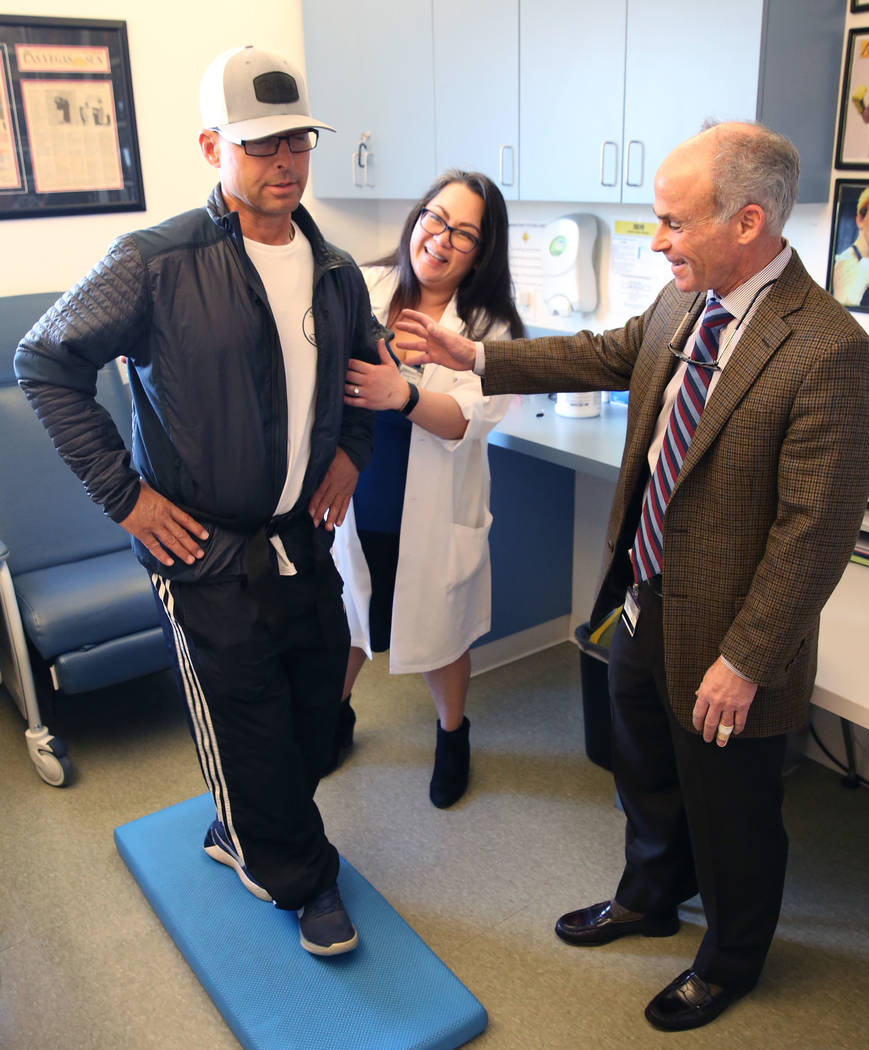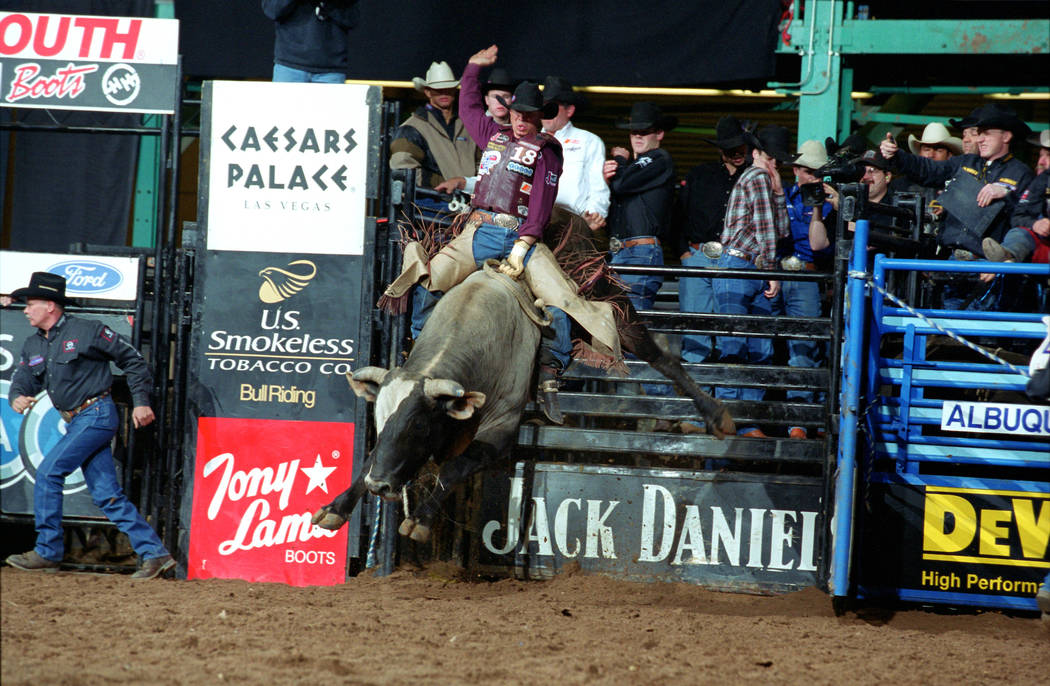Las Vegas center studies effects of head blows in bull riders
Aaron Semas can count the number of severe concussions he’s suffered on 10 fingers.
Past that, the retired professional bull rider can’t remember how many times he hit his head in his 20-plus-year career in the arena. Other memories — of his travel or moments he deems not so important — are hazy, too.
Curious about whether those slams to his head could’ve taken a toll on his brain function, Semas, now 52, and living in Weatherford, Texas, west of Fort Worth, visited the Cleveland Clinic Lou Ruvo Center for Brain Health Tuesday.
He’s the first retired professional bull rider to enroll in the center’s study, which aims to determine whether multiple blows to the head have long-term effects on neurodegenerative conditions such as chronic traumatic encephalopathy, or CTE.
The study, which has enrolled about 720 professional fighters since April 2011, is expanding its reach to determine whether the findings can be applied to athletes of all types, said Dr. Charles Bernick, study head and the clinic’s associate medical direct.
“We view it as similar to Alzheimer’s or Parkinson’s disease, in that it’s a progressive brain disease,” Bernick said. “We felt that we were in a very good position to try to answer questions that were just standing out there about CTE.”
CTE is a disease in which brain cells become injured. It’s only diagnosed posthumously through an autopsy, which looks for elevated levels of the protein tau, a marker for degeneration, Bernick said. There’s no diagnostic test yet for the disease.
“The theory is that this protein can spread throughout the brain,” Bernick said. “That’s why it’s progressive.”
But why tau proteins develop, how long they take to spread, and whether a person can be susceptible to disease through genetic or environmental factors are all unanswered questions. Bernick hopes the study will help answer at least some of them.
“The hope is we’ll participate in helping develop a diagnostic test for CTE,” he said.
The tumble of 2001
Before Semas first rode a bull, he tested his hand at the sport on calves on the ranch where he grew up. He began riding bulls as a teen, and it became a lifelong passion. The fear of risking his life fueled an adrenaline rush every time he straddled a bull.
“It’s extremely dangerous. Every time you climb on one and nod your head, there’s the potential that something horrible can happen,” said Semas, who had his worst and final fall in the summer of 2001, about a year before his retirement. He remembers falling into his riding hand, the mammal tumbling with him.
The memory stops there.
Semas was referred to the Cleveland Clinic study through Dr. Tandy Freeman, who works with the Professional Bull Riders Inc., the bull riding organization based in Pueblo, Colorado.
“I just figured it would be a good idea just to get a leg up on anything that could be going on,” Freeman said, adding that he hopes to help advance safety in athletics and PBR as a study participant.
PBR CEO Sean Gleason said he was eager to partner with the Lou Ruvo Center in recognition of the impact brain injury can have on pro riders.
“The health and well-being of our athletes is of the utmost importance to us,” he said. “To have someone like the Cleveland Clinic offer to embrace bull riders as part of their study is a huge help to us.”
Since Semas’ retirement, helmets have become mandatory for riders born after Oct. 15, 1994. Still, he’s glad his teenage son and daughter aren’t riders themselves.
“Just watching now, I flinch,” he said. “I know what can happen.”
Contact Jessie Bekker at jbekker@reviewjournal.com or 702-380-4563. Follow @jessiebekks on Twitter.
Cleveland Clinic Lou Ruvo Center seeks participants
Bernick said he will likely enroll about 50 professional bull riders in the next year or two for his study on athletes' brain health. Currently, 720 fighers and 100 healthy, control participants take part in the study.
The Lou Ruvo Center for Brain Health continuously enrolls participants, both healthy and those afflicted by disease, in clinical trials. Visit healthybrains.org for more information.



